QCF: Castlevania Lords of Shadow: Mirror of Fate HD
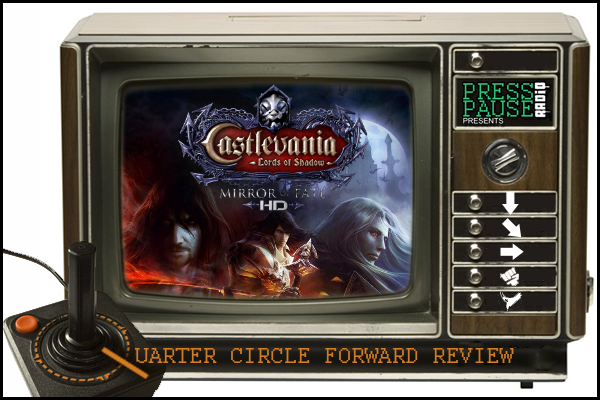
 he Castlevania reboot from Mercury Steam and Kojima productions is a noteworthy one amongst it’s peers that have attempted to modernize with a new beginning. In some degree, no matter how drastic the change to the conventions or tropes with the source material that’s being reworked, there’s always some form of semblance to the roots of the property; Lords of Shadow barely identifies with remotely recognizable to the Castlevania label.
he Castlevania reboot from Mercury Steam and Kojima productions is a noteworthy one amongst it’s peers that have attempted to modernize with a new beginning. In some degree, no matter how drastic the change to the conventions or tropes with the source material that’s being reworked, there’s always some form of semblance to the roots of the property; Lords of Shadow barely identifies with remotely recognizable to the Castlevania label.
It wasn’t until players were greeted to a cliffhanger ending comprised of several spontaneous details tof a drastic change to story direction. Gabriel’s predicament and radically changed outlook displayed no inkling of clarification to what sort of events took place prior leading to the revelations portrayed within these last scenes—just a bait and switch for the upcoming sequels that would deliver the answers we were seeking. Before we would see the true sequel to Lords of Shadow however, Mercury Steam in true Japanese fashion, would give us the midquel that is Mirror of Fate to bridge the two main games on the 3DS—unfortunately, it didn’t do so hot.
The theme of Lords of Shadow has always been about second chances however, and with Mirror of Fate being rereleased on Xbox Live and PlayStation Network with an HD facelift and improvements directly responding to the criticisms of its portable cousin; the redemption pays off, but comes off a bit winded in the process.
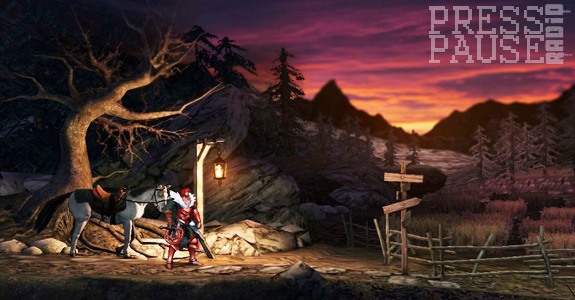
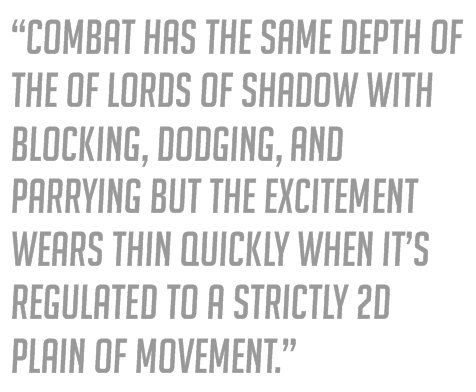
Most the glaring issues with the framework in Mirror of Fate are still in attendance in this redefined facelift, but the issues are now negligible at best thanks to the fidelity of this revision’s visuals.
Many of the branching paths and routes laid out through Drac’s castle in MoF involve jumping to toward some contextual ledge or cryptic alcove that’s hidden to the naked eye; the limited resolution capabilities of the 3DS could only do so much to render these pertinent details for effective exploring—This HD remake improves upon this weakness exponentially.
Everything from the character models to the stage environment have a much sharper detail resulting in this much more refined aesthetic to meets the demands of the explorative probing for the Metroidvania design. The game is still very dark however and doesn’t utilize any of the gamma variance options that the hardware offers for this version—ultimately the graphics are an improvement but still falls short of what’s expected from a true upgrade.
The differences are sparse from it’s portable counterpart aside from the graphical facelift but still do manage to enhance this HD edition in very minimal but albeit surprisingly effective ways, making it the definitive version. Since the very first DS was released, there’s a bold line that divides its library for generations to come into two different camps. There are games that facilitate unique use of the touch screen and then there are games that hinged on pushing gimmicks on the touch screen that added little to nothing to the experience and were often more annoying than inventive—Mirror of Fate could be classified under the latter.
During key points of the venture, whether you encounter energy fountains, found chests or even fought bosses, a lot of these segments depended on touch-screen input, and it was for the worse. In an combat intensive game, needing to suddenly reach for your stylus to touch a certain area on the bottom screen for a quick time is beyond unnatural, and faulty, MoF HD substitues this dynamic with organic button inputs instead. The HD version also makes these subtle shifts with the screen hub and UI into a more traditional layout of a side-scroller that fits the pace and structure much more than then placing all down on a secondary screen. The mini-map this time focuses directly where the player is and follows the player’s position wherever their hoppin’ and boppin’ leads them within the glorified gothic home. This little quirk simplifies navigation into a more simplified process as it works in conjunction with the objective waypoint but instead of placing in some yet-to-be-explored grid. The waypoint is positioned on the outer edge of the mini-map that implies a generalized area of location, an d in turn, doesn’t completely take away the magic of discovery (technically a waypoint in a Metroidvania game arguably eliminates any no matter how you cut it but the tweak doesn’t go unnoticed.)
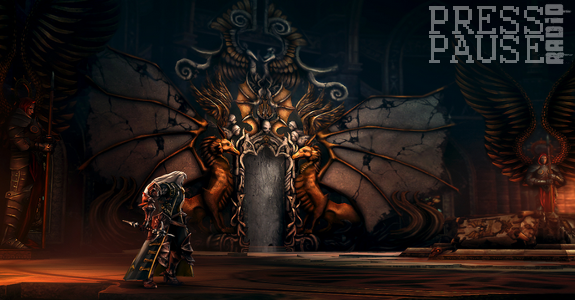
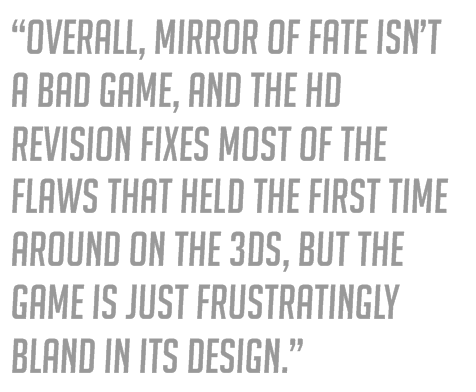 The core game under all of the tweaks is still very much the same as it was on the 3DS though and while this format is better suited to enjoy it both visually and intuitively, it’s still fundamentally junked.
The core game under all of the tweaks is still very much the same as it was on the 3DS though and while this format is better suited to enjoy it both visually and intuitively, it’s still fundamentally junked.
The level design is as bland as it gets. The biggest hook of Metroidvnia styled gameplay is expansive discovery, exploring every nook and cranny for a secret relic through cryptic and esoteric means from the use items or capabilities you earn within your adventure; Mirror of Fate screws the pooch here. The main means of traversal and detection are centered heavily on vertical ascension, getting the shiny doo-dad to swing and climb or rise to the next level within the castle and there’s little more aside from that. It takes this complex formula down to a superficial exercise of one-dimensional path-blazing.
The experience system awards you with new combo moves that you can check out from the inventory screen and a slight increase to your health bar but nothing else, considering the combat doesn’t significantly change from the new moves, earning experience and raising levels is forgetfully trivial. Combat has the same depth of the of Lords of Shadow with blocking, dodging, and parrying but the excitement wears thin quickly when it’s regulated to a strictly 2D plain of movement. The tradition of having two distinct magic modes to enhance combat is present but again, suffers from the same lack of luster when translated to 2D. Though the game boasts a large cast of playable characters, they all play nearly identical to one another sans some graphical aesthetic differences to an otherwise similarly function abilities found among the playable vampire killers.
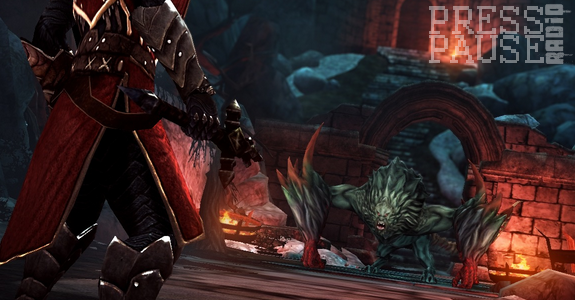
The Boss fights do provide some excitement but nothing to write home about; the real meat in this titles is it’s engrossing narrative. Slowly advancing through events that depict the origins of the Castle itself, and the start of the Belmont Clan Dracula-hating lineage is treated with same amount theatric presentation that was so eloquently portrayed in the predecessor. Mirror of Fate adapts all of the familiar elements and tropes in the series that were absent from the original into the same stylized adulteration that Mercury Stream set for the Lords of Shadow series.
Overall, Mirror of Fate isn’t a bad game, and the HD revision fixes most of the flaws that held the first time around on the 3DS, but the game is just frustratingly bland in its design. It still comes recommended, especially considering the fiction it covers within the storyline is significant to absorb before playing the upcoming release of Lords of Shadow 2, but this Mercury Stream at its weakest in their efforts to reboot the legendary franchise.
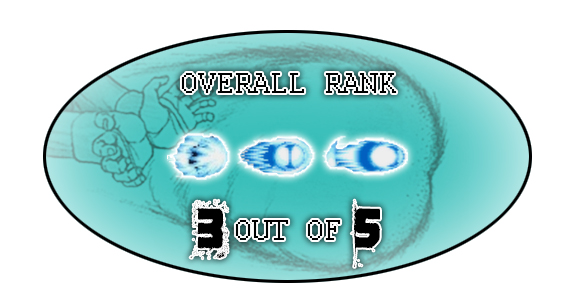
 Castlevania,
Castlevania,  It's ok really,
It's ok really,  Lords of Shadow,
Lords of Shadow,  Metroidvania,
Metroidvania,  XBLA,
XBLA,  action games | in
action games | in  QCF Reviews
QCF Reviews 









